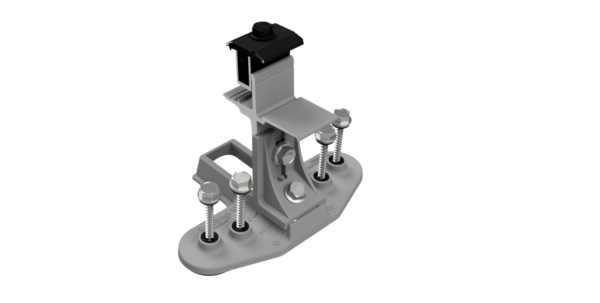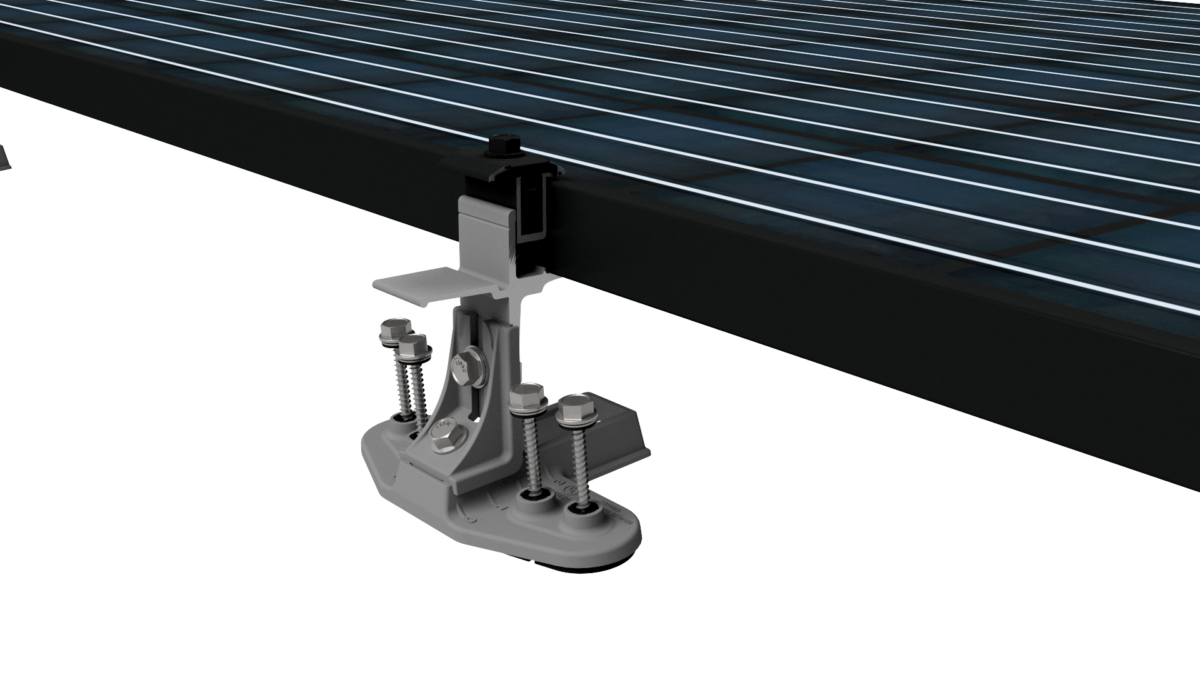Solar racking and mounting supplier SnapNrack announced an innovative new solar panel mount called TopSpeed, which is designed to be attached to the panel on the ground before being hoisted to the rooftop for installation.
The new product is aimed at reducing installation times and limiting time spent on the rooftop. SnapNrack said duration of time spent on the rooftop can be cut by over 50% when compared to traditional racking solutions. This is a boon to the safety of installation workers.
The mounts are attached to the roof, leveled and aligned on SnapNrack’s universal skirt. The process helps simplify materials staging and racking assembly.

The installation process involves three steps. First, TopSpeed mounts are attached to the solar modules. Next, wire management is performed, with Smart Clips and module level power electronics (MLPE) frame kits set in place. These first two steps are performed on the ground, while the universal skirt is laid out on the roof. Finally, the modules are quickly affixed to the skirt.
The product is UL certified and is rated to perform under 90 mph to 180 mph wind loads and up to 90 pounds per square foot of snow load.
All mounts are secured with a proprietary half-inch head wood screw and roof sealant. The design allows for single-tool installation. The mounting system includes new features like retained fasteners and deck mounts.
The product is made of alloy aluminum and 300 series stainless steel. It is finished on the top with a black oxide bolt and bonding clip and a black anodized clamp, while the bottom has a mill finish. It is approved for installations between zero-degree and 90-degree roof pitches.
The product will be displayed at Intersolar North America 2023 in Long Beach, California from Feb. 14-16, 2023 at the SnapNrack booth #1461.
This content is protected by copyright and may not be reused. If you want to cooperate with us and would like to reuse some of our content, please contact: editors@pv-magazine.com.









By submitting this form you agree to pv magazine using your data for the purposes of publishing your comment.
Your personal data will only be disclosed or otherwise transmitted to third parties for the purposes of spam filtering or if this is necessary for technical maintenance of the website. Any other transfer to third parties will not take place unless this is justified on the basis of applicable data protection regulations or if pv magazine is legally obliged to do so.
You may revoke this consent at any time with effect for the future, in which case your personal data will be deleted immediately. Otherwise, your data will be deleted if pv magazine has processed your request or the purpose of data storage is fulfilled.
Further information on data privacy can be found in our Data Protection Policy.